Abdurrahman Fouda
Study of BSM Inter-Packet Gap Tails in C-V2X Networks
Nov 28, 2023Abstract:Cellular vehicle-to-everything (C-V2X) enables safety-critical connected vehicular service by exchanging basic safety messages (BSMs) among nearby vehicular users (VUEs). Timely transmission of BSMs is crucial to avoid stale information at VUEs. However, successive packet losses can lead to large inter-packet gaps (IPGs), reducing the BSMs' reliability. This paper investigates the tail behavior of IPG and information age (IA) distributions in C-V2X mode 4, a decentralized resource allocation method based on semi-persistent scheduling (SPS). We study the improvements and trade-offs introduced by SAE one-shot transmission to decrease the number of successive BSM losses at destination VUEs. The study employs high-fidelity system-level simulations that closely follow the SPS process of CV2X mode 4 to evaluate the performance of interleaved one-shot SPS transmissions. The numerical results demonstrate significant improvement in the IPG and IA tail distributions in various simulation scenarios. Additionally, we propose an accurate analytical model to characterize the IPG tail behavior of C-V2X BSM transmissions. The proposed model is validated by comparing its results with those obtained using the system-level simulations. Our validation shows that the proposed model generates analytical results that coincide with the asymptotic slopes of IPG distribution in different BSM transmission modes.
HARQ Retransmissions in C-V2X: A BSM Latency Analysis
Nov 28, 2023



Abstract:Cellular vehicular-to-everything (C-V2X) systems offer the potential for improving road safety, in part through the exchange of periodic basic safety messages (BSMs) between nearby vehicles. The reliability and latency of these messages is a key metric. Hybrid automatic repeat request (HARQ) retransmissions are one technique used to this end. However, HARQ may come at the expense of consuming the limited available wireless resources, especially in highly congested scenarios. This paper studies BSM transmission latency and reliability when HARQ retransmissions are used with the semi-persistent scheduling (SPS) in C-V2X transmission mode 4. We do so through extensive system-level simulations that closely follow the SPS process. Furthermore, we provide an analytical model for the tail behavior of the BSM latency distribution with HARQ retransmissions that is a good approximation to the simulation results. Our study reveals the impact of several deployment settings (e.g., bandwidth configurations and vehicle density).
Toward cm-Level Accuracy: Carrier Phase Positioning for IIoT in 5G-Advanced NR Networks
Jul 14, 2022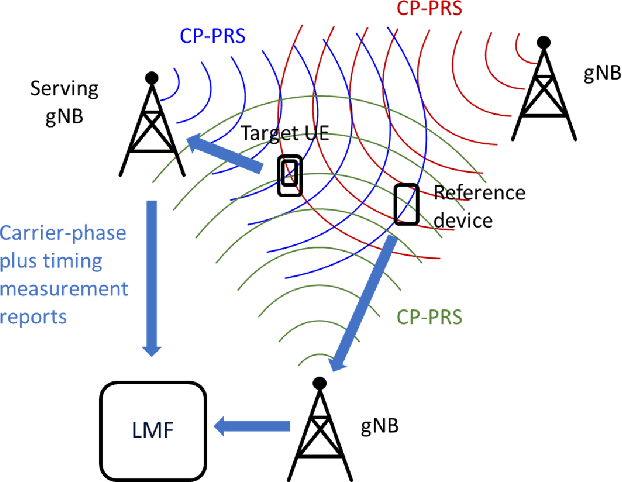
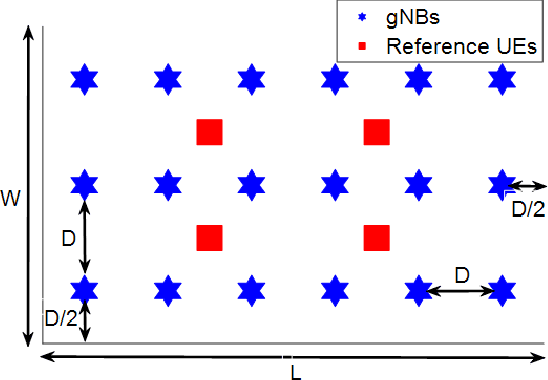
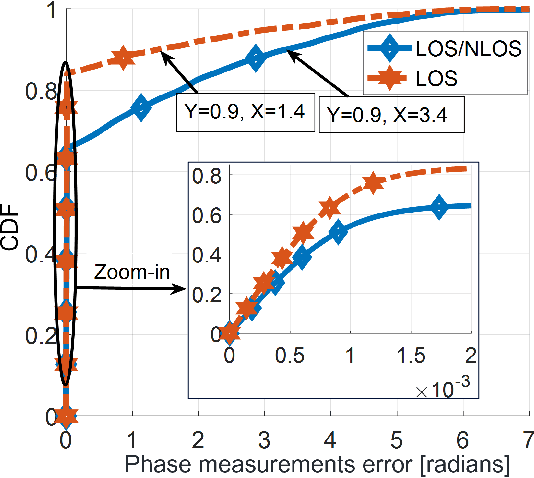
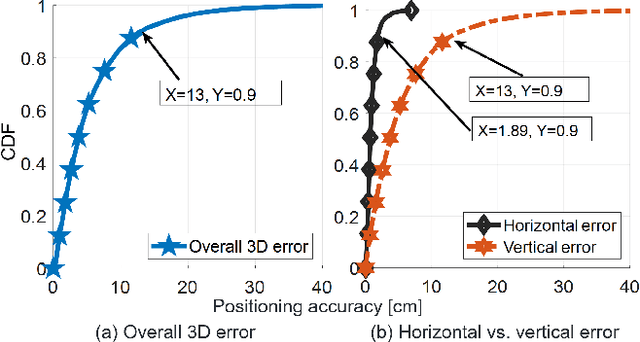
Abstract:High-precision positioning accuracy is among the key features of the future fifth-generation (5G-advanced) cellular networks to enable a wide variety of commercial, critical, and consumer use cases. 5G new radio (NR) systems have relied on (1) cellular temporal/angular-based positioning methods to provide the indoor environments with a moderate positioning accuracy that is well below the positioning requirements of these future use cases and (2) highly precise satellite carrier phase/code-based positioning methods for the outdoor deployments that are limited by the availability of the satellite coverage. This paper defines the relevant standard mechanisms and algorithms to use the carrier phase cellular-based measurements as a potential solution to achieve a high-precision positioning estimation accuracy in 5G-advanced NR networks. The presented positioning technique is evaluated using high-fidelity system-level simulations for indoor factory (InF) deployment scenarios. The numerical results demonstrate that the presented technique can significantly improve the positioning accuracy compared with the state-of-the-art NR positioning methods. Our findings in this paper also show that the carrier phase method not only provides an indoor complement to the outdoor satellite positioning but also provides an outdoor alternative to the high-precision satellite methods.
Interleaved One-shot Semi-Persistent Scheduling for BSM Transmissions in C-V2X Networks
Sep 30, 2021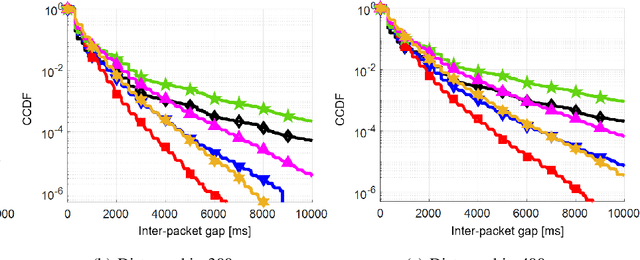
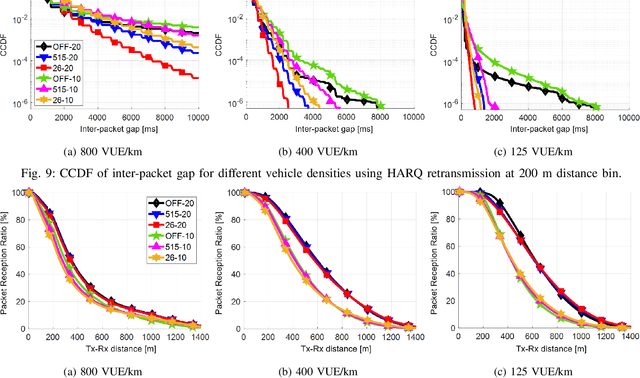
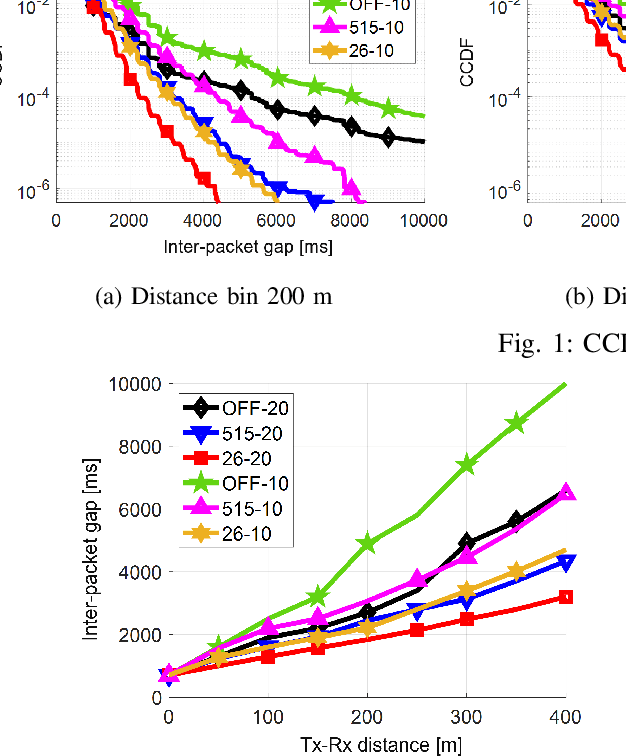
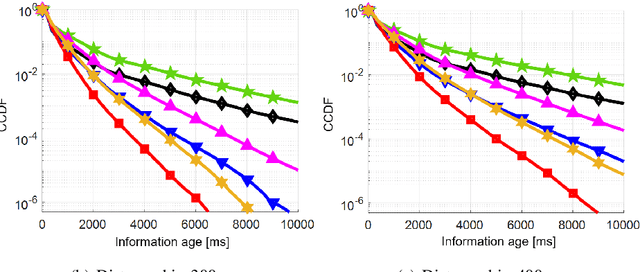
Abstract:Cellular vehicle-to-everything (C-V2X) networks are regarded as one of the main pillars to enable efficient and sustainable Intelligent Transportation Systems (ITS) safety applications and services. Such services rely on the concept of exchanging periodic status updates (i.e., basic safety messages (BSMs)) between nearby vehicular users (VUEs). Hence, it is essential to ensure small inter-packet gaps (IPGs) between successive BSMs from nearby VUEs. Large IPGs, due to successive packet losses, can result in stale information at a VUE. In this paper, we study the tail behavior of the IPG and the information age (IA) distributions using C-V2X transmission mode 4 (a decentralized resource allocation method based on semi-persistent scheduling (SPS)). Specifically, we investigate improvements and trade-offs introduced by the SAE-specified concept of one-shot transmissions. We use a high-fidelity system-level simulator that closely follows the SPS process of C-V2X transmission mode 4 to evaluate the performance of the interleaved one-shot SPS transmissions. Our numerical results show that the tails of the IA and IPG complementary cumulative distribution functions (CCDFs) are significantly improved when one-shot transmissions are enabled in various simulation scenarios.
Dynamic Selective Positioning for High-Precision Accuracy in 5G NR V2X Networks
Feb 20, 2021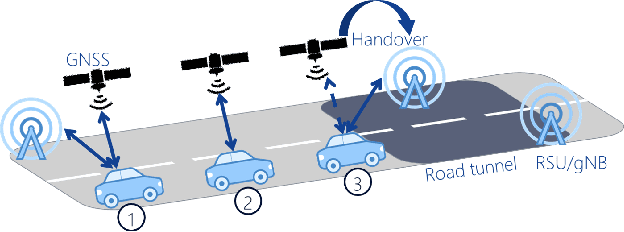
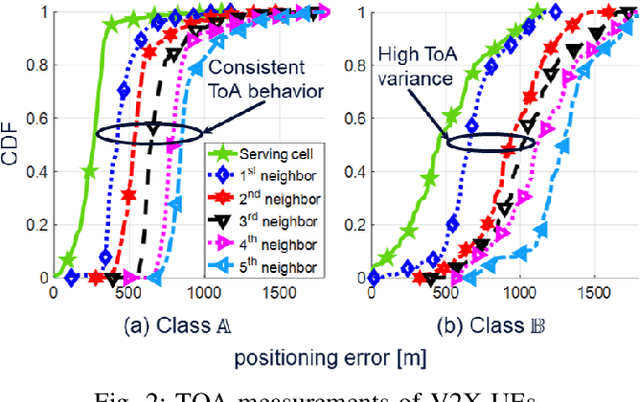
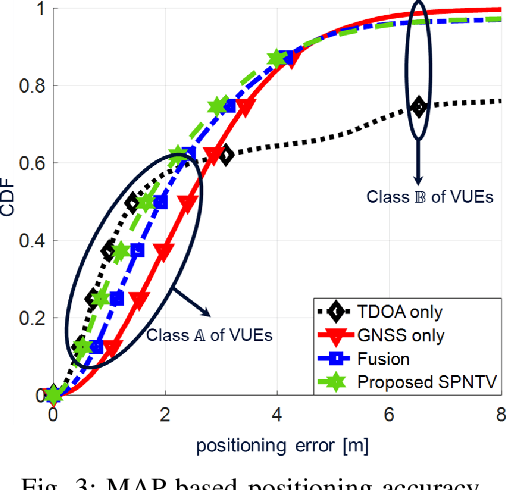
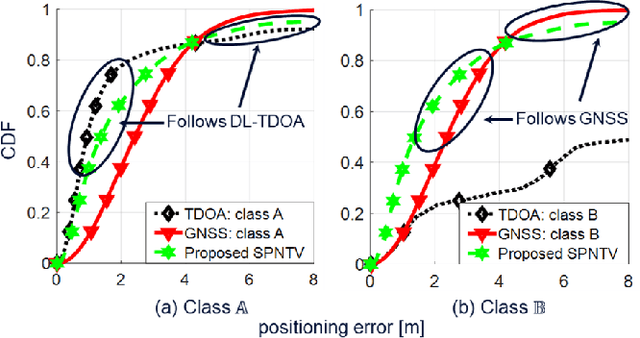
Abstract:The capability to achieve high-precision positioning accuracy has been considered as one of the most critical requirements for vehicle-to-everything (V2X) services in the fifth-generation (5G) cellular networks. The non-line-of-sight (NLOS) connectivity, coverage, reliability requirements, the minimum number of available anchors, and bandwidth limitations are among the main challenges to achieve high accuracy in V2X services. This work provides an overview of the potential solutions to provide the new radio (NR) V2X users (UEs) with high positioning accuracy in the future 3GPP releases. In particular, we propose a novel selective positioning solution to dynamically switch between different positioning technologies to improve the overall positioning accuracy in NR V2X services, taking into account the locations of V2X UEs and the accuracy of the collected measurements. Furthermore, we use high-fidelity system-level simulations to evaluate the performance gains of fusing the positioning measurements from different technologies in NR V2X services. Our numerical results show that the proposed hybridized schemes achieve a positioning error $\boldsymbol{\leq}$ 3 m with $\boldsymbol{\approx}$ 76\% availability compared to $\boldsymbol{\approx}$ 55\% availability when traditional positioning methods are used. The numerical results also reveal a potential gain of $\boldsymbol{\approx}$ 56\% after leveraging the road-side units (RSUs) to improve the tail of the UE's positioning error distribution, i.e., worst-case scenarios, in NR V2X services.
 Add to Chrome
Add to Chrome Add to Firefox
Add to Firefox Add to Edge
Add to Edge